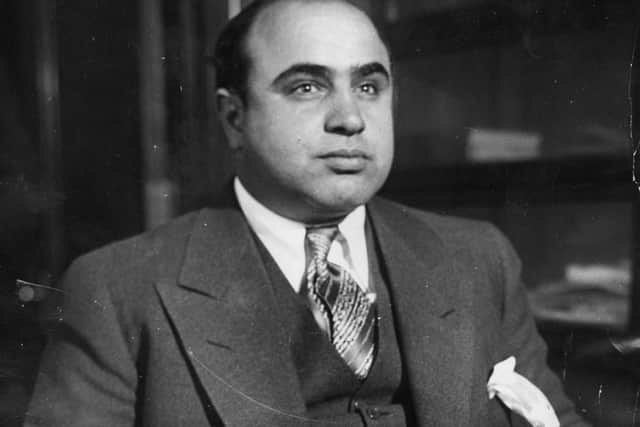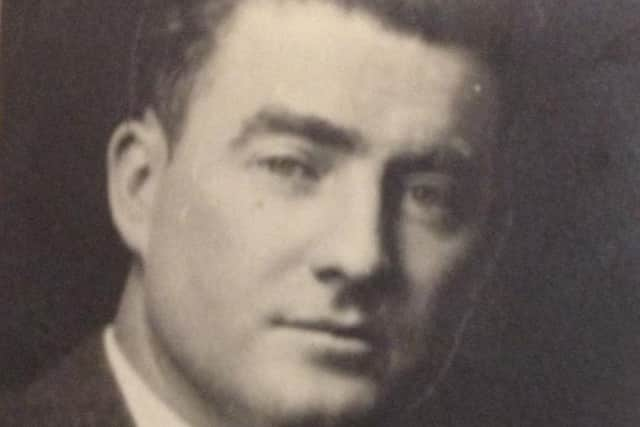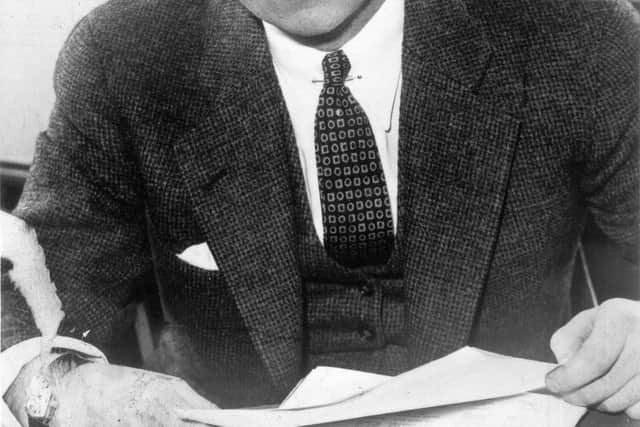An ‘Untouchable’ Irishman helped put Al Capone in jail
and live on Freeview channel 276
Apart from a temporary ban on booze during WWI “to save grain for producing food”, Wilson vetoed the Prohibition. But it went ahead, and Lucy’s fascinating article highlights the boozing and bootlegging that followed, including the legal production of communion wine which “increased by hundreds of thousands of gallons”.
On recent Roamer pages Mitchell Smyth shared stories about Irishmen, native-born or immigrants’ sons, who were gangsters during Prohibition’s unprecedented lawlessness from 1920 to 1933.
Advertisement
Hide AdAdvertisement
Hide AdA Canadian journalist originally from Ballycastle, Smyth learned a lot about Prohibition while writing about organised crime for the Toronto Star. Today he tells the other side of the story - an Irishman who helped topple the biggest gangster of them all - ‘Scarface’ Al Capone.


His name was Martin (Marty) Lahart, second-in-command to Eliot Ness, the chief of an elite crime-fighting unit called The Untouchables. Marty was born in Chicago but was a full-blooded Irishman - his parents left County Kilkenny in the great wave of Irish emigration in the late 19th century.
Ness’s nine-man squad of agents within the Prohibition Bureau did not have an official name but a Chicago newsman labelled them The Untouchables when it emerged that, in the corruption-rife city, they could not be bribed.
When 26-year-old Ness was chosen to lead the battle against Capone in 1929, his first pick was his old friend, 30-year-old Marty Lahart, an investigator with the Pinkerton Detective Agency in Chicago, with whom Ness had previously worked.
Advertisement
Hide AdAdvertisement
Hide AdThe talkative Irishman and the quiet Ness “got along like gin and tonic,” writes Max Allan Collins in ‘Scarface and the Untouchables’, the definitive history of the Chicago bootleg war.


The squad’s exploits were celebrated in the 1959-‘63 television series ‘The Untouchables’ and then in the 1987 blockbuster movie of the same name, starring Kevin Costner as Eliot Ness. Apart from Ness, the real names of the agency were not used in the series or the movie but James (Jim) Malone, played by Sean Connery in the film, is clearly based on Marty Lahart.
Early in the movie Ness and Malone are plotting strategy. Malone says: “You wanna know how to get Capone? They pull a knife, you pull a gun. He sends one of yours to the hospital, you send one of his to the morgue. That’s the Chicago way.’’
“The words could have come straight from Marty Lahart’s mouth - that was known to be his credo,’’ says Mitchell Smyth. He says Ness and Lahart led the Untouchables in harassing Capone’s organisation, raiding beer and spirits warehouses and intercepting ‘rum runners’ (shipments from Canada and Europe), while investigating the mob’s finances.
Advertisement
Hide AdAdvertisement
Hide AdIn the end it was the money trail that nailed Capone and he was sent to the penitentiary for income tax evasion. By then Ness and Lahart estimated their raids had cost Capone 500,000 dollars (about 9 million dollars today) in lost income - money he needed to ‘buy’ police and politicians.


In the beginning Ness had tried to work with the Chicago police but Lahart was sceptical. He planted an agent in one of the city’s largest police stations and, acting on the undercover man’s information, he raided the station and found they were selling booze seized in police raids. “The irony of one branch of law enforcement raiding another branch was not lost on Ness and Lahart,’’ says Smyth.
It was at that time that Charles Schwartz of the Chicago Daily News began calling the Prohibition men ‘The Untouchables’ and it became the squad’s unofficial title. When The Untouchables disbanded with the repeal of Prohibition in 1933, Lahart joined the FBI and was sent to Tucson, Arizona, where he battled the burgeoning traffic in drugs coming over the Mexica border. He died, aged 75, in 1975.
Ness, too, remained in law enforcement, moving to Cleveland, Ohio, where he became the city’s ‘Safety Director’, which meant he was both Police Chief and Fire Chief. In the 1950s he began writing ‘The Untouchables’, a memoir of his Chicago days. He didn’t live to enjoy the success that the book and the subsequent TV series would bring. In May 1957, shortly after approving the book’s proofs, Eliot Ness died of a heart attack. He was 54.